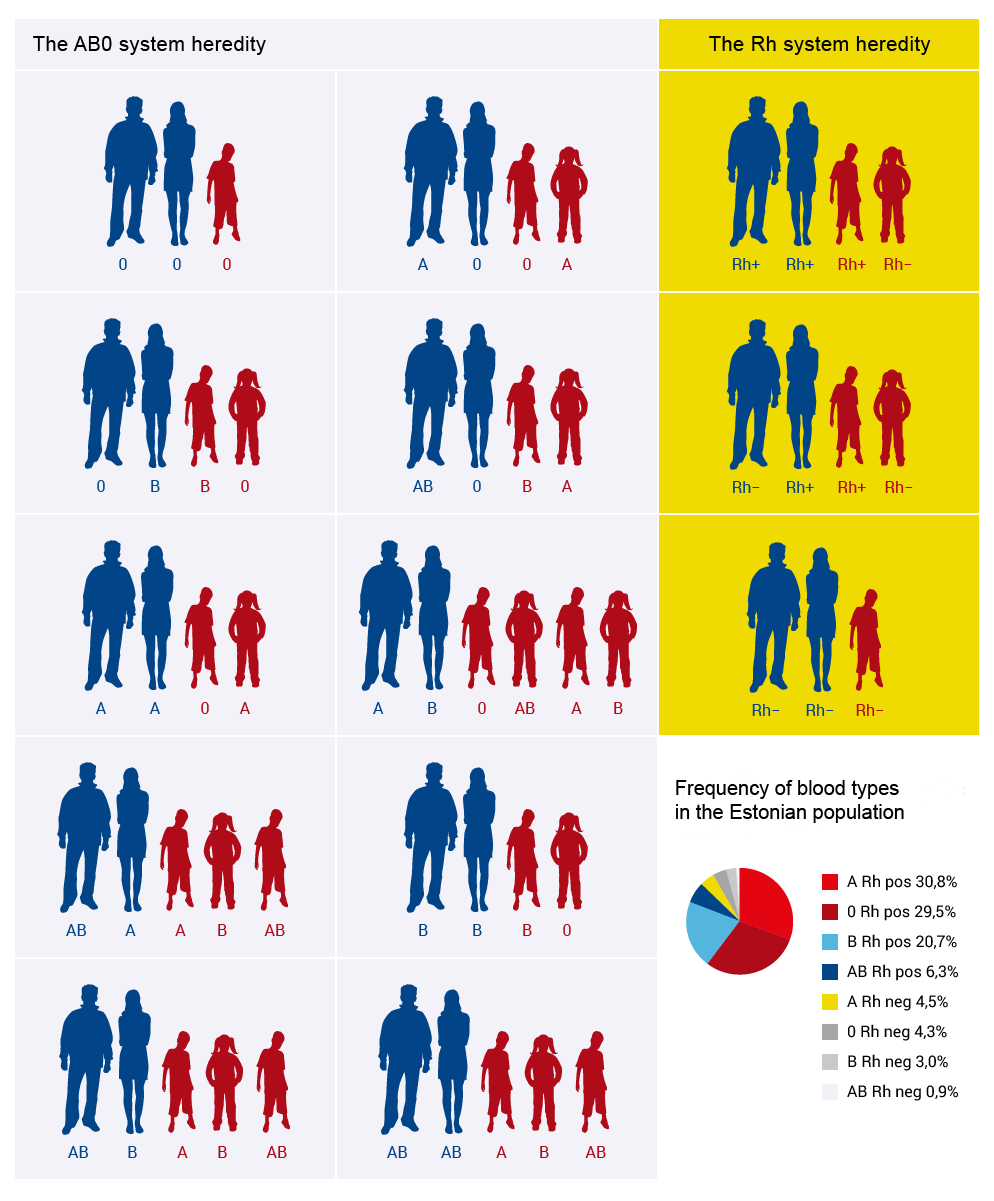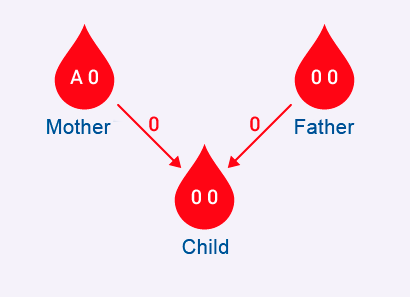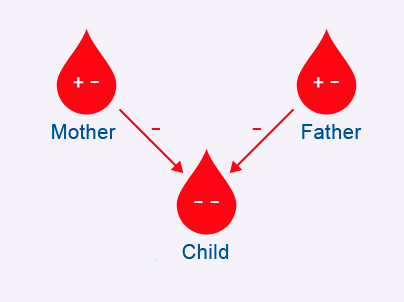About Blood Types
If a doctor talks about your blood type, usually he or she is referring to two things: your type in the ABO system and Rhesus (Rh) factor.
Human blood type is determined by antigens on the red blood cells. An antigen is a structure on the cell surface that causes a human immune response reacts to if the structure is foreign to the person’s body. As a result, blood type match is of critical importance. The donor’s blood type is identified at the Blood Centre, and the patient’s blood type is determined before transfusion.
The ABO system
The most important blood group system is ABO, in which your blood is classified as A, B, O or AB. This is determined by two antigens on the red blood cells:
- A — red blood cells have only the A antigen
- B — red blood cells have only the B antigen
- AB — red blood cells have the A and B antigens
- O — neither A nor B antigen
If a person has A, B or O blood type, their plasma contains antibodies that destroy the antigens that the person doesn’t have. For example: If you have blood type A, it’s imperative that you don’t receive a B type transfusion, as you have antibodies that will destroy B antigens. If you have blood type O, you have antibodies that will fight the A and B antigens.
If a person has blood type AB, they don’t have such antibodies, and they can accept transfusions from all other blood types. Thus AB blood type people can be termed universal patients.
But O Rh negative donors can be called universal donors, as red blood cells from such donors can be used for transfusions for all patients.
The Rh system
A person’s Rh group can be positive (+) or negative (-).This depends on the existence of antigen RhD on the red blood cells. If the RhD antigen is present, a person is Rh positive and if RhD is not present, the person is Rh negative.
If a person is Rh negative, they may develop antibodies on exposure to Rh positive blood (such as during transfusions or pregnancy). These antibodies may cause pregnancy complications for Rh negative women giving birth to an Rh positive child.
In addition, about 30 other blood group systems have been identified besides the ABO and Rh blood group systems. Of these, the clinically most significant are Kell, Kidd and Duffy systems. Donors are also tested for Kell blood group.
How is the blood type identified?
The person’s blood is combined with a reagent with antibodies.
For instance, three drops of a donor’s blood are placed on a slide or dish. Anti-A reagent is added to the first drop, anti-B reagent to the second one and anti-D – RhD reagent – to the third one. If agglutination is noted in the first drop, that shows that the person has A antigen. If the same thing doesn’t happen in the second drop, the person has no B antigen; and if agglutination is seen in the third drop, the person is Rh positive. We can say based on that example that the donor is A positive.
Ensuring a match between donor and patient is extremely important; otherwise a patient may have a dangerous reaction to the transfusion.
Blood types heredity and frequency in the Estonian population
People inherit traits equally from their mother and father. So inherited genes are always in two parts: one part mother, one part father .
When we examine blood type heredity, we should keep in mind that:
- there are two copies of most of our genes
- we pass on only one of the copies to our children (randomly)
- genes come in different versions (alleles)
- some alleles are stronger than others
| The AB0 system | The Rh system | |||||||||||||||||||||||||||||||||||||||||||
In the ABO system, antigens occur in three versions: A, B and O. Considering that genetic material occurs in duplicate form, there can be six different combinations:
Either the stronger allele is expressed, both in equal degrees or a combination of them. In the ABO system, A and B are stronger than O, which means the following for blood type of the offspring:
Example: the mother has the allele combination AO and her blood type is A (she is also a O carrier and there is the chance of passing on the O to her child). The father is blood type O and he has the allele combination OO, and thus he can only pass on O – the trait of having no antigens – to the child. Thus it’s possible that the child’s blood type will be A (AO) or O (OO).
|
Matters are a little simpler in the Rh system, with two possibilities: either the antigen RhD is present (Rh positive) or not (Rh negative). Positive is dominant over negative.
Example: If the mother is Rh positive, and also has the negative allele of the gene as a recessive trait (+/-) and the father has the same combination and they both pass on the negative allele, the two Rh positive parents can conceive a Rh negative child.
|
|||||||||||||||||||||||||||||||||||||||||||


